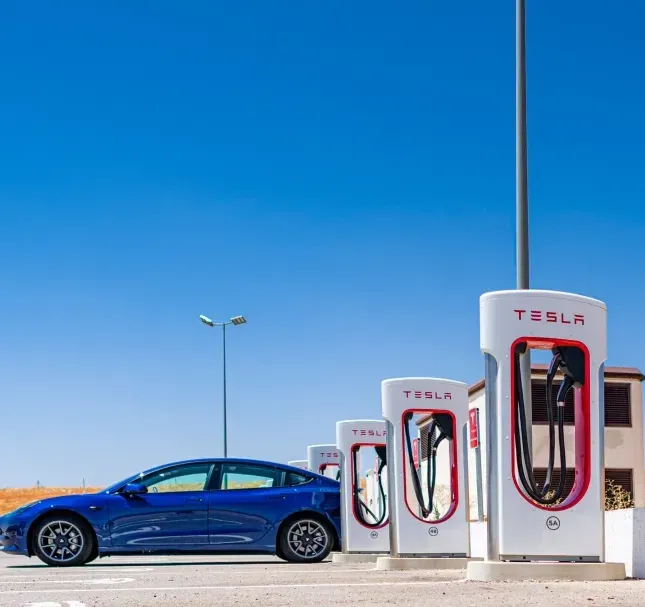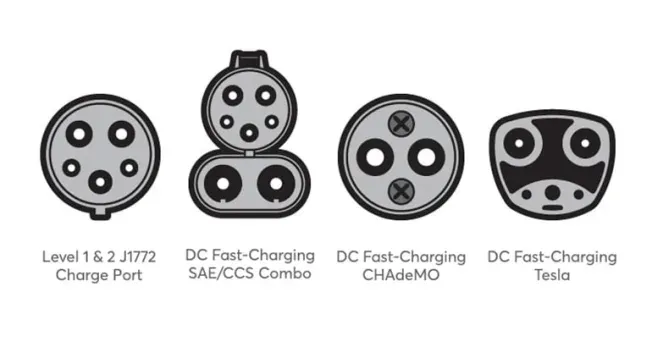Tesla’s charging infrastructure is one of the most extensive and fastest in the world. In the UK alone, Tesla operates over 40,000 destination chargers and more than 1,100 rapid Superchargers. For years, only Tesla owners could tap into the full potential of the Supercharger network. However, that's changing.
As of May 2022, Tesla has started opening its Superchargers to non-Tesla electric vehicles (EVs). This move marks a significant shift in EV accessibility and convenience. Now, if your car has a CCS (Combined Charging System) connector — standard in most modern EVs — you can power up at select Tesla Superchargers. All it takes is the Tesla mobile app to initiate and manage charging sessions.
But how does this work, and what does it mean for the broader EV community? Let's explore.

Tesla’s decision isn’t just about generosity — it’s strategic, regulatory, and financial.
In the United States, the 2021 Bipartisan Infrastructure Law allocated $7.5 billion to expand the EV charging network nationwide. One of the conditions for accessing these federal funds was that charging stations must be available to all EV brands, not just proprietary ones like Tesla. To qualify, Tesla committed to opening portions of its Supercharger and Destination Charger networks to non-Tesla vehicles by the end of 2024.
Supercharging isn’t free for most Tesla owners anymore, and the same applies to non-Tesla drivers. Every time someone plugs in and pays, Tesla earns. As the number of EVs on the road rises, so does the potential income from charging services — a growing source of revenue beyond car sales.
Tesla has long maintained that its mission is to accelerate the world’s transition to sustainable energy. By opening its charging network, Tesla encourages adoption across all brands, reducing “range anxiety” and making EV ownership more practical for everyone.
On its official website, Tesla states:
“It’s always been our ambition to open the Supercharger network to non-Tesla EVs. Doing so encourages more drivers to go electric and supports our mission to accelerate the world’s transition to sustainable energy.”
The answer depends on what kind of charger you want to use — Destination Chargers or Superchargers — and what type of charging connector your EV supports.
These Level 2 chargers are typically found at hotels, restaurants, parking garages, and retail locations. They're designed for slower, overnight, or long-term charging.
Compatibility: Any EV with a Type 2 connector (the standard in the UK and most of Europe) can use a Tesla Destination Charger.
Type 1 Connector Owners: If your EV uses a Type 1 connector, you’ll need a Type 2 to Type 1 adaptor to connect.
These are Tesla’s ultra-fast DC chargers, capable of adding up to 200 miles of range in just 15 minutes.
Compatibility: Non-Tesla EVs must have a CCS connector to use Superchargers.
Tesla App Required: Because there’s no screen on Supercharger units, the Tesla mobile app is essential to begin, monitor, and end a charging session.
Availability: Not all Superchargers are open to non-Tesla vehicles — yet. Use the app to locate stations near you that offer third-party access.

Charging a non-Tesla car at a Tesla Supercharger is simple, but there are a few things you need to know to make the process smooth.
The Tesla app (available on iOS and Android) is your main tool. You’ll use it to:
Find compatible Superchargers
Start and stop charging sessions
Pay for electricity used
Monitor your charging status in real time
Use the app to search for Superchargers that are currently open to non-Tesla EVs. Tesla is gradually expanding access, so availability is still limited in some areas.
Charging costs can vary by station and even by time of day. The Tesla app displays kWh pricing at each location. If multiple stations are on your route, compare prices before deciding where to stop — it could save you money.
If your EV uses a connector other than CCS (for example, CHAdeMO or Type 1), you may need an appropriate adapter — though this primarily applies to Destination Chargers. Tesla Superchargers in the UK and Europe only work with CCS for non-Tesla vehicles.
So, how fast can a non-Tesla EV charge at a Supercharger?
It Depends on the Car
Charging speed depends on several factors:
Your car’s maximum DC fast-charging capability
The condition and state of your battery
Ambient temperature
The current load on the charger
In tests conducted with vehicles like the Ford Mustang Mach-E and Rivian R1T, charging performance at Tesla Superchargers was comparable to top-tier third-party DC fast chargers such as those from IONITY or Electrify America. That means many non-Tesla EVs can expect rapid charging — up to 200 miles of range added in about 15 minutes — if their battery supports it.
However, older models or entry-level EVs with lower max charging speeds will still charge at their rated capacity, even if the Supercharger offers more power.
In North America, Tesla uses its proprietary North American Charging Standard (NACS) plug instead of the more universal CCS format. This historically meant that only Tesla vehicles could connect to Superchargers in the U.S. and Canada.
But the tides are changing. In 2023, major automakers including Ford, General Motors, Mercedes-Benz, and Volvo announced plans to adopt Tesla’s NACS standard for their future EVs. These cars will begin to include NACS charging ports from 2025 onward. In the meantime, Tesla will provide adapters so CCS-equipped vehicles can still access Superchargers using the NACS plug.
This marks a significant step toward a unified standard in North America — one that favors Tesla’s connector.
Opening up Tesla’s charging network has benefits beyond convenience:
With access to Tesla’s network, non-Tesla EV owners have significantly more charging locations at their disposal — reducing wait times and range anxiety.
Tesla Superchargers are known for their reliability, speed, and minimal downtime. In contrast, some third-party charging stations suffer from inconsistent maintenance and technical issues.
As Tesla opens its network and other automakers adopt NACS, the EV industry edges closer to unified hardware and software standards — benefiting consumers and infrastructure providers alike.
While the expansion of Tesla charging to all EVs is promising, there are a few caveats to consider:
Limited Availability: Not every Supercharger is available to non-Tesla cars — yet. Expansion is ongoing.
Cable Reach: Tesla charging cables are designed for Tesla vehicles. Some non-Tesla EVs have charge ports located in spots that may require parking creatively or using an extension.
Pricing Models: Charging costs for non-Tesla vehicles may be higher than for Tesla owners. Additionally, Tesla may offer subscription plans for lower rates.
Compatibility Bugs: Some users have reported software glitches or issues during the early rollout. Always keep your EV software and Tesla app updated.
The push for open networks, universal connectors, and smart charging is accelerating. As more governments invest in EV infrastructure and more automakers collaborate with Tesla, the idea of brand-specific charging stations is slowly fading.
In the next few years, most EV drivers — regardless of brand — will likely enjoy seamless access to fast, reliable chargers across countries, highways, and cities.
Tesla's role in this evolution is pivotal. By opening its Superchargers to the wider market, it isn't just growing its revenue — it's shaping the future of clean transportation.
So, can any electric car use a Tesla charger? Not all — but many.
If your EV has a CCS connector (in Europe or the UK) or a NACS adapter (in North America), you may already be eligible to use Tesla’s Superchargers. Tesla Destination Chargers are even more flexible, as long as you have the right plug.
As Tesla continues to open its network and more automakers adopt Tesla’s connector standard, the future of EV charging looks faster, more accessible, and more unified than ever before.
